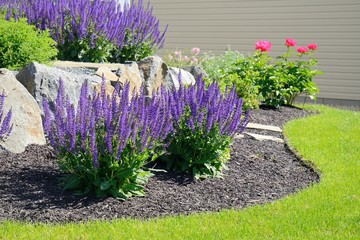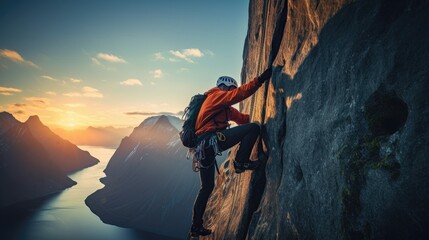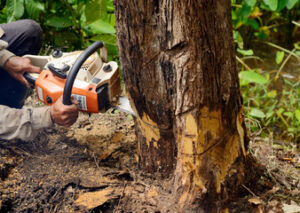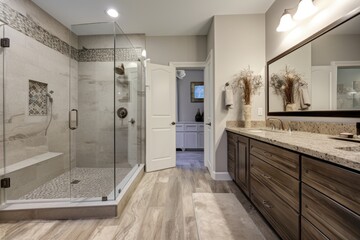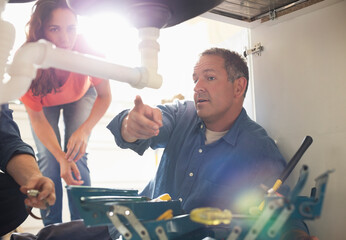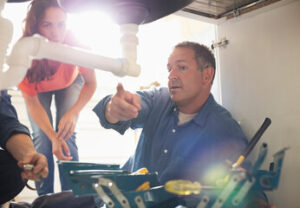Many air conditioning problems that sound serious are actually minor issues with easy fixes. However, if these problems are not fixed in a timely manner they can turn into bigger issues that will ruin your AC unit.
AC maintenance includes cleaning critical components like the evaporator and condenser coils, air filters, and drain lines. It also lubricates the moving parts to reduce friction and prevent premature wear. Contact AC Repair Round Rock for professional help.
A thermostat is considered an integral part of an air conditioning system. It controls indoor temperatures and has a significant impact on energy efficiency, comfort, and home air quality.
Whether you have an older mechanical unit or state-of-the-art programmable thermostat, it needs regular maintenance and care to ensure it works as intended. A faulty thermostat can cause several different problems, including inconsistent indoor temperatures and increased operating costs.
The first step to troubleshooting a thermostat problem is always to check the power supply. Make sure the circuit breaker is not flipped off, as this will prevent the thermostat from turning on and functioning correctly. If it isn’t, flip the switch to “on” position to restore power to the device.
Next, look at the thermostat’s display screen. If the display is dark, this may indicate that it’s time to replace the batteries. This is a simple and affordable fix, but one that many people forget to do.
If the display is still dark, check the wiring connections to ensure they’re firmly and securely connected. A broken connection could be the culprit, especially if the thermostat is old and has worn out over time. Lastly, test the temperature of your room to see if it is cooler or warmer than the setting on the thermostat.
If the thermostat continues to experience problems, it’s best to contact a licensed HVAC professional for further inspection and repair. Working around electrical components can be dangerous, so it’s important to leave the work to professionals who are certified and experienced in performing this task. An experienced professional can also help you upgrade to a new thermostat with programmable and smart features that will save you money and improve your home’s comfort levels.
Dirty Air Filters
Air filters are one of those out-of-sight, out-of-mind maintenance items that can easily go unnoticed until it’s too late. Unfortunately, neglecting filter maintenance can lead to some serious problems for your home comfort system and indoor air quality.
Dirty filters allow pollutants to circulate throughout the HVAC system and into your living spaces. This affects indoor air quality and can exacerbate allergies, especially for individuals who suffer from them. In addition, the debris accumulated in a dirty filter can also become a breeding ground for bacteria and mold, which may cause unpleasant odors in your home.
When a filter is overdue for replacement, it becomes clogged to the point where air cannot pass through it. Instead, incoming air bypasses the filter and sneaks through the gap around the frame. This allows contaminated air to coat the evaporator coils and fins, reducing system performance. Over time, the contaminant buildup can also damage the unit, resulting in costly repairs and premature unit replacement.
A clogged air filter also forces the system to work harder to compensate for the restricted airflow. This can cause the blower motor to overheat and the evaporator coils to freeze, which could eventually lead to a full system failure.
A clogged air filter can also reduce the efficiency of the unit, leading it to cycle on and off every few minutes rather than cooling your home at an even temperature. This is also known as short cycling and can be a sign of a bad thermostat, faulty compressor or other mechanical issues. Regular cleaning or replacing your air filters can prevent these issues and keep your home cool and comfortable for years to come.
Faulty Compressor
The compressor is the heart of your air conditioning system, responsible for circulating refrigerant through the entire system to remove heat and humidity. It’s a complex, delicate part that’s not immune to wear and tear over the years. If your compressor isn’t operating as it should, you won’t be able to cool down your home. Loud noises and chemical leaks are common signs of an impending compressor failure, but there are some less obvious warning signs that you should never ignore.
If you notice that your AC unit keeps tripping your circuit breaker, it’s important to have a professional check out the issue right away. The tripping may indicate that the compressor is drawing too much power, which can cause it to overheat and burn out. Another possible sign that your compressor is going bad is if it starts making a loud, humming or rattling sound whenever the system turns on or off. This indicates that the compressor motor is loose within the compressor unit and could come off altogether.
Another big sign of a bad compressor is if your AC is blowing warm air. This is a sign that the compressor has failed to turn liquid refrigerant into cold gas, which is what your AC needs in order to cool down your home. The problem is often caused by a lack of refrigerant in the system, which can be easily fixed with a simple refrigerant top up from an HVAC expert.
Sometimes, however, the compressor is simply worn out and needs to be replaced. If you’re dealing with this issue, it’s a good idea to get an AC replacement estimate from an HVAC professional so that you can make the best decision for your situation.
Faulty Contactor
A contactor is a part of the air conditioning system that switches current to different components in your AC. This includes the compressor, fan motor, and other electrical parts. A bad contactor could result in your system not working at all. It could also lead to a higher electricity bill. This is why it is important to keep up with your home air conditioning maintenance.
One sign of a faulty contactor is if your AC makes a clicking noise. This noise is made by the metal coils and contacts in the contactor revolving. The problem is that these parts are not able to close or open as they should. If this problem persists, you will need to have a professional inspect and repair the contactor.
Another indication of a bad contactor is if it fails to switch on the compressor and evaporator coils when the thermostat signals them to do so. If this happens, your air conditioner will not cool. Additionally, you may notice a humming sound that occurs when the contactor is overheating.
Faulty AC Contactors can also cause your air conditioning system to cycle frequently. This is a sign that the electrical connections in your system are not properly aligned and are causing the contactor to overheat.
You can check for a faulty contactor by using a multimeter to measure the voltage on the volt terminals on both sides of the contactor. A good voltage reading is between five and 20 volts. If your reading is lower, you should buy a replacement contactor and install it. If the voltage is too high, you should call a professional to inspect your AC unit.
Faulty Circuit Board
The circuit board is the brain of your air conditioner, relaying signals to your thermostat and other components like the compressor, evaporator coil, and blower fan to keep your home at a cool temperature. It can also display error codes that indicate something is wrong with your air conditioning. Often, circuit boards suffer from internal current surges that disrupt proper communication between the different wires and cause your AC to malfunction. These surges are usually caused by lightning strikes, power line disturbances, or other issues that impact the electrical system of your home. Using surge protectors and regular AC maintenance can help reduce these fluctuations and increase the lifespan of your circuit board.
Your circuit board’s copper traces and other components are connected with precision, so even the slightest defect can ruin your device. If you suspect a short circuit, you should carefully examine the board for signs of damage and use a multimeter to check for continuity. Then, you can use jumper wires to reconnect the broken connections.
You can also look for evidence of corrosion on the circuit board, such as burn marks or missing pieces. Corrosion damages the copper and causes the circuit to short. To prevent this, technicians thoroughly wash and rinse the circuit board with degreaser to remove contaminants. They also pre heat the circuit board to a specific temperature and quickly reflow the solder joints.
Other common AC repair mistakes include loose or disconnected wiring, damaged or broken connections, and misplaced solders. A professional AC technician can inspect every wire for loose or disconnected points, tighten them, and make sure the circuit breaker is correctly sized to protect against excess voltage spikes that can harm the circuit board.

